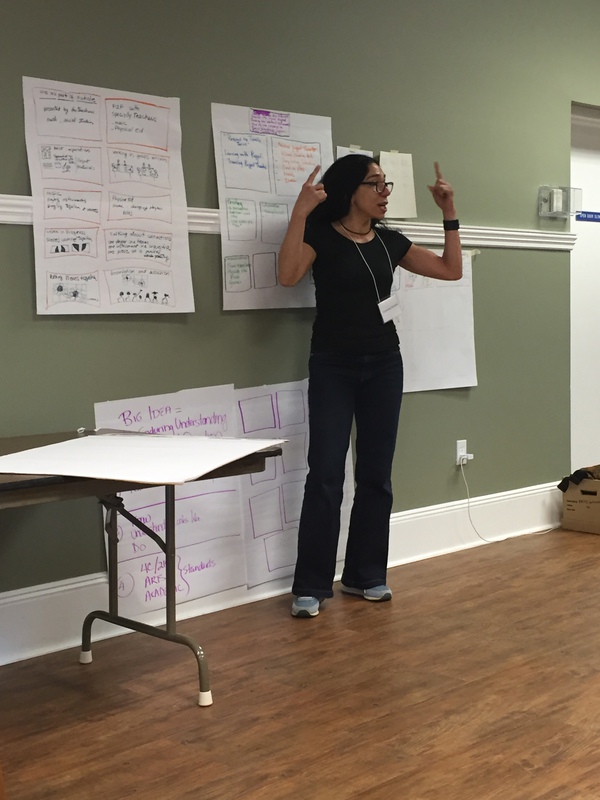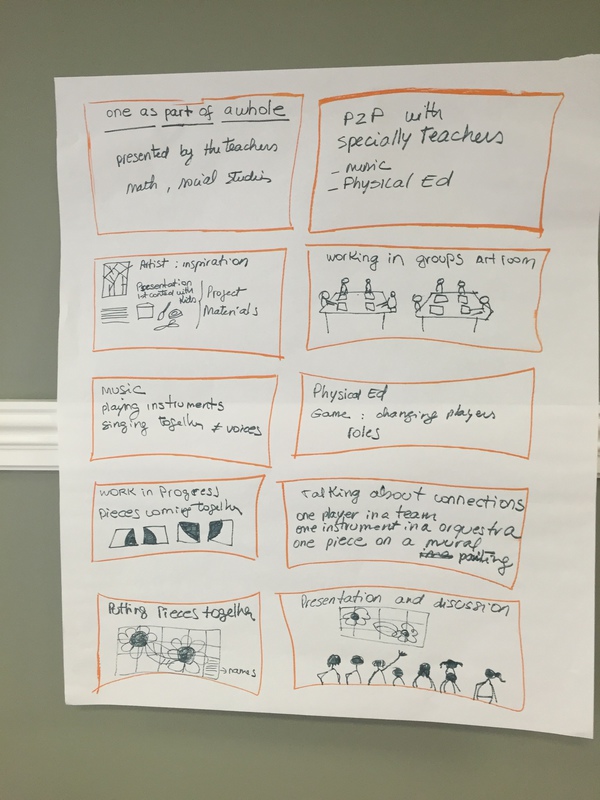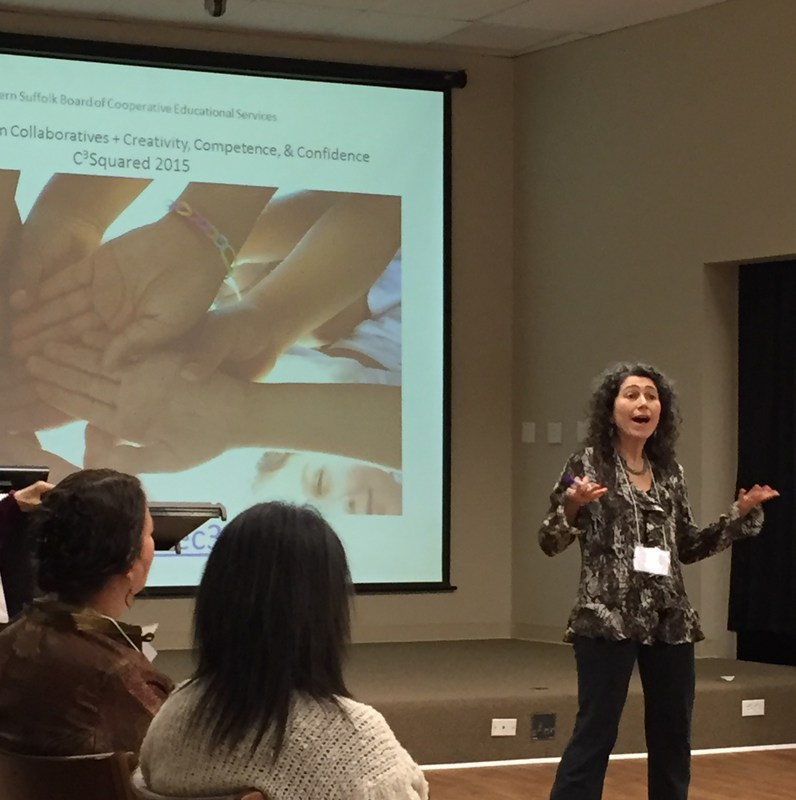
In April, the (C3)2 team met with cultural partners on Long Island to share news and information about the (C3)2 grant as well as discuss best practices in cultural partnerships and project-driven learning in schools. Participants worked individually, in pairs, and in small groups throughout the day-long institute, building on their knowledge and understanding of 21st Century learning goals and how they can be implemented in their cultural work.
The 2016 Cultural Partners Institute kicked off with the question: "What do great cultural partners do?" (C3)2 Curriculum Coordinator Laura Reeder (above) touched upon the qualities that characterize a successful cultural partner, including being creative, being a dedicated collaborator, and understanding and aligning arts projects to current educational practices. (Ms. Reeder's Cultural Partners Institute Framework PowerPoint can be found in Resources.)
She then asked the participants, "When do you feel most creative?" Working in pairs, participants interviewed their partner to find out who that person was and when he or she feels most creative. The interviewer then introduced the partner to the rest of the group.
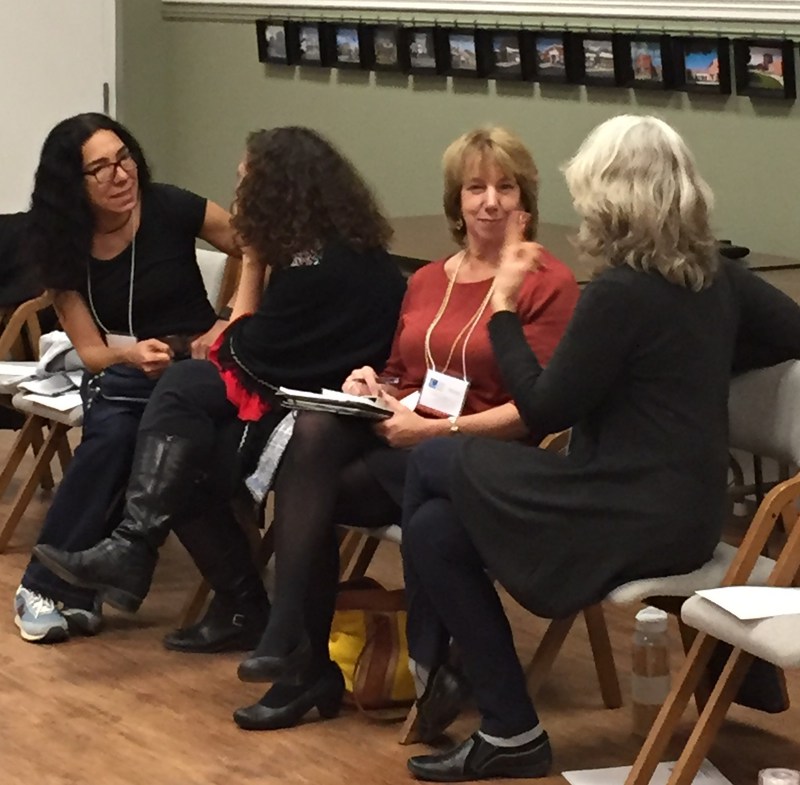
Participants quickly learned that the room was filled with artists from a wide range of disciplines. However, despite their different artistic passions, most reported their creativity was strongest when they were problem-solving, helping others express themselves creatively, and helping children feel empowered.
What Does 21st Century Learning Look Like?
Next, (C3)2 Project Director Carol Brown (below) provided background information on the grant project. The (C3)2 grant project follows a previous arts integration grant called Creative Classroom Collaboratives or C3. The focus of the C3 grant was to foster 21st century skills (creativity, collaboration, critical thinking and communication or the 4Cs) among teachers and students by encouraging creativity, collaboration and the utilization of the arts in all areas of teaching and learning.
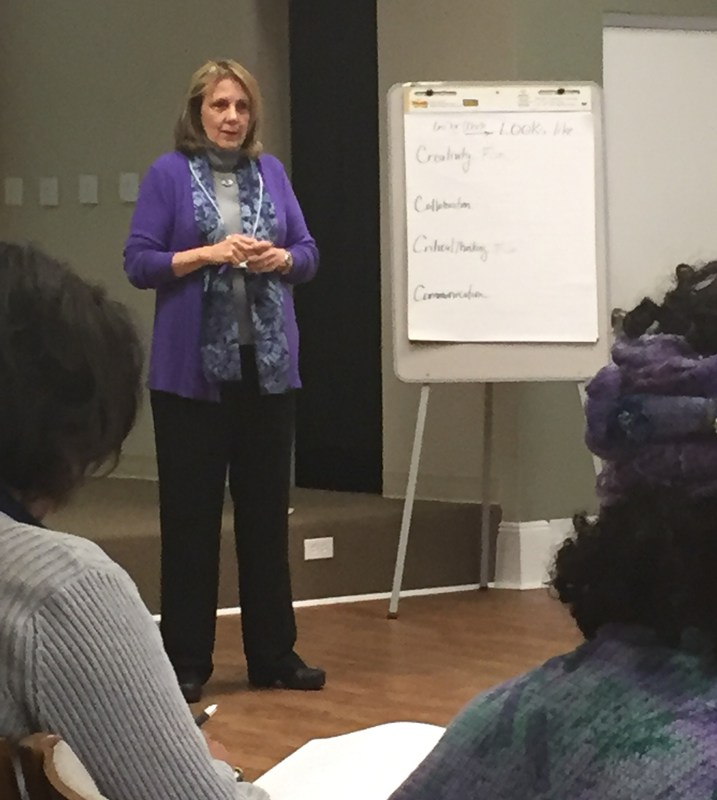
Ms. Brown shared a few exciting findings from that earlier grant project. "The majority of treatment teachers in Grade 3 (86%) and Grade 4 (89%) reported increases in their use of cooperative instructional practices," reported Ms. Brown. "In addition, there was more frequent use of interdisciplinary, arts-focused collaborations in lesson planning, and strategies to meet student needs."

The current (C3)2 grant takes what was learned from the C3 grant and added the goals of creativity, confidence and competence. "(C3)2 asks teaching artists to think about the teachers," said Laura. "How can the teaching artists inspire innovation and creativity in teachers? It's about teaching people to be human again, to work successfully with other humans." The grant encourages teaching artists and teachers to consider these goals when designing an arts-integrated learning experience. "An arts-integrated unit plan begins with a big idea or essential question," explained Laura. "It then relies on the collaboration of teaching artists, classroom teachers, and other partners to create a meaningful learning experience. It details what that experience will look like and how the learning will be demonstrated. And it is aligned to 21st learning, the Common Core, and the standards, including the art standards."
The cultural partners worked in small groups with a (C3)2 teaching artist to design an arts-integrated unit that fosters 21st Century learning skills.

Afterwards, the cultural partners storyboarded one of their own cultural projects or residencies. Participants were asked to show how the (C3)2 goals resonate in what they do. The day culminated with the cutural partners sharing their project ideas and reflecting on the day.
